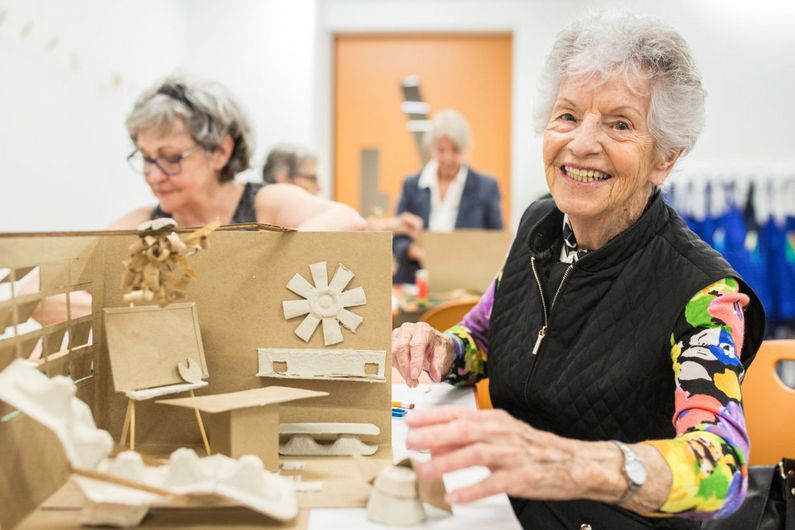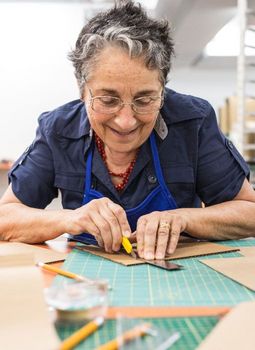Can museums help seniors stay fit?
- UdeMNouvelles
10/04/2023
- Martin LaSalle
A study led by UdeM medical professor Olivier Beauchet suggests that museums could play a role in maintaining the physical health of the elderly.
It seems self-evident: seniors who go to a museum and take art classes are more active than seniors who don’t.
But is their increase in physical activity a direct result of their participating in the classes, or is there something else at play?
A pilot project led by Quebec geriatrician and neurologist Olivier Beauchet shows the latter: the number of steps that seniors take in a day actually increases outside the hours they attend class.
Beauchet, a professor in the Department of Medicine at Université de Montréal and a researcher at its affiliated Institut universitaire de gériatrie de Montréal, has been researching the benefits of art for seniors for more than 10 years.
He's been working with the Montreal Museum of Fine Arts (MMFA) since 2015. The partnership began with a pilot project involving 209 people over 65 who were taking the “Thursdays at the Museum” art workshops offered at the time.
“The idea behind the project was that art is good for you—but we had to prove it,” said Beauchet. “That first project showed that art workshops improve the physical health of seniors, but the data were based on a self-administered questionnaire, so there was an element of subjectivity.”
53 seniors studied
In 2019, Beauchet and his team analyzed data on 53 people aged 71 to 78 who had been in the first study. For three months, the subjects wore a pedometer watch that tracked their daily steps. Half of the subjects attended the Thursday workshops at the MMFA while the other half, the control group, did not.
In the end, the control group added an average of 527 daily steps, a 10-per-cent increase. The “Thursdays at the Museum” group increased their daily step count by 3,190, or 42 per cent. The same pattern was found during both active and inactive hours of the day.
The results were published in the journal European Geriatric Medicine.
“According to the literature, you need to take around 7,000 steps a day to see an observable difference in physical health,” Beauchet said. “The people who took the art workshops crossed that line, going from an average of 6,817 steps per day to over 10,000. That is a large and significant change.”
Those 3,190 additional daily steps add up to a distance of about 1.3 kilometres per day.
The data collected by the pedometer-watches show that the trip to the museum didn’t account for the entire increase in the step counts of workshop participants. The seniors who attended the workshops also walked more at other times.
More social interaction
“Going to the museum contributed to the higher step count for the workshop group but not enough to explain the entire difference between the two groups,” Beauchet explained. “Our hypothesis is that the activity at the museum triggered social interactivity beyond the activity itself, which made the participants more physically active.”
This hypothesis rests on two postulates. Since better physical health contributes to mental health, it is plausible that better mental health encouraged participants to be more physically active. As well, the museum workshops were group activities in which participants interacted with each other, breaking the social isolation that is associated with sedentary lifestyles.
Overall, the art workshops at the museum “made people more socially interactive, and we found an improvement in their social health,” Beauchet reported.
“Although our findings must be interpreted with caution, since they are based on a small number of subjects, they tend to show that participation in arts activities contributes to better physical health.
"Museums could therefore have a role to play in health promotion and disease prevention among the elderly.”















